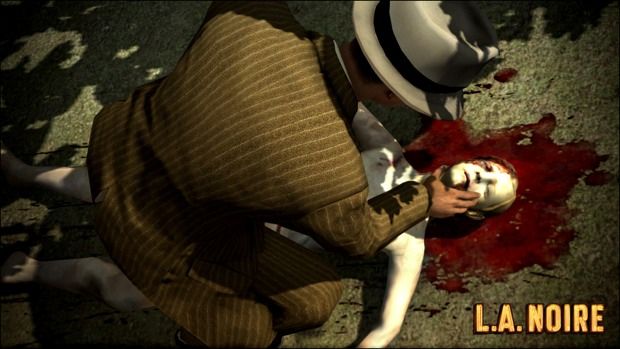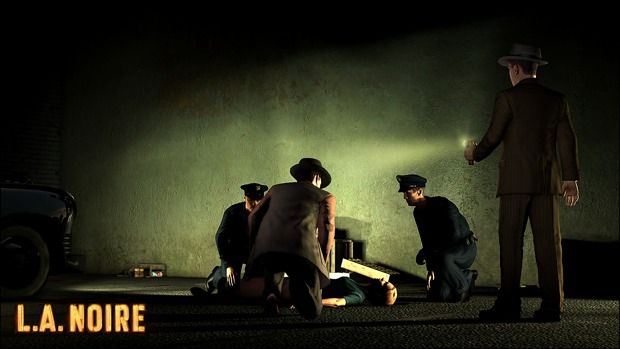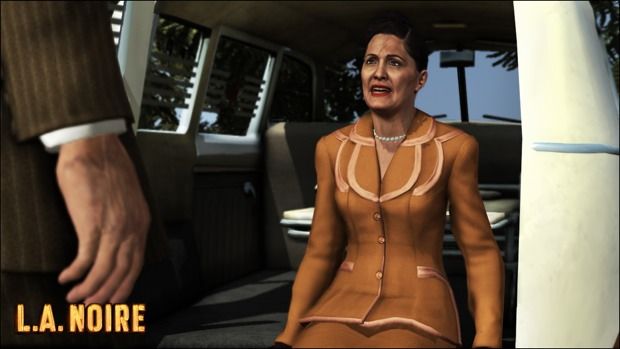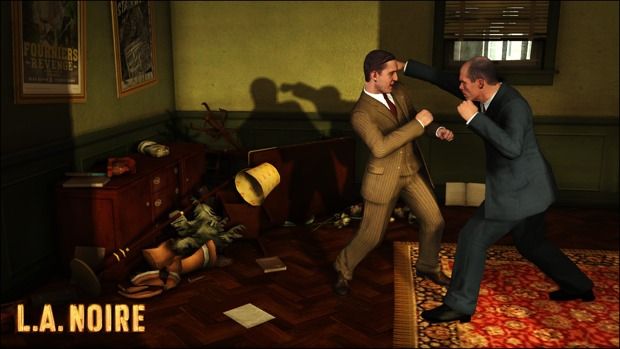For once, you can believe the hype. L.A. Noire is a revolution in interactive entertainment (or video games, as us less high-falutin’ types like to call it) and a major step forwards for games as a narrative artform. Both aesthetically and technically, it is an impressive achievement and one of the most ambitious and forward-thinking games you’ll play this year. It’s also a real departure for Rockstar: a game which throws away many of the trappings we associate with GTA or Red Dead Redemption and embraces, without irony or reservation, a serious tone and serious themes. In a few years time we’ll be looking back at it, like Heavy Rain or Mass Effect, as a pioneer.
Our quick take
In the end, it is the atmosphere and the storytelling, more than the somewhat flawed gameplay, that make L.A. Noire so unmissable. Like Heavy Rain before it, it’s a game that shoots for the moon and falls slightly short, but where the fact that it aims so high and gets so close is amazing in and of itself. Fans of action and free-wheeling, free-roaming adventure need not apply, but this is a gritty, beautifully-realised game of detection, mystery and murder, and a pointer towards where games might one day head as they go more mainstream. Normally we use phrases like “interactive TV” or “interactive cinema” as a negative. With L.A. Noire, it’s the very highest complement.
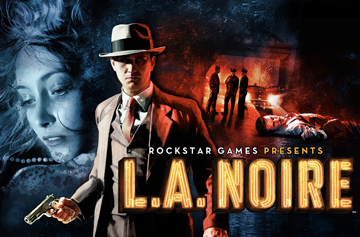
L.A. Noire - 4.0 / 5
| FOR | AGAINST |
|---|---|
|
|
But before we get carried away, we also have to mention that L.A. Noire is flawed. Some of its gameplay elements are successful, but others much less so, and it is a game that is destined to infuriate and disappoint almost as frequently as it amazes. For a game that sits at the cutting edge of games design and development, L.A. Noire is not always as sharp as it looks.
There are some preconceptions you might want to rid yourself of before you start. For one, L.A. Noire is not a period take on the open-world crime genre. In fact, it owes more to Fahrenheit/Indigo Prophecy, Heavy Rain, the old-school graphic adventure and the fiction of James Ellroy and Raymond Chandler, not to mention Polanski’s Chinatown, than it does GTA4 and Red Dead Redemption. Sure, you can spend hours driving around a stunning recreation of late-1940s Los Angeles, gazing at the scenery and seeing all the sights. True, there are side-missions, gun battles, car chases and fist-fights to be enjoyed. At heart, however, L.A. Noire is a fairly linear, dialogue-driven adventure game with the focus firmly on investigating crime scenes, discovering clues and interrogating suspects. It’s not anywhere near as action-oriented as some of the hype and marketing had made it seem.
In fact, the meat of the game lies in two basic activities: investigation and interview/interrogation. In the former, you pace around crime scenes and other key locations, searching for key bits of evidence with the aid of simple visual, musical and controller rumble cues. These let you know when you’re on to something, or when you’ve seen everything that needs to be seen. It’s all handled with the maximum of physical interaction and the minimum of distancing interface. Cole moves around in third person, and the view shifts to first-person when you have something to examine. Before your eyes, Cole reaches inside jackets to check the pockets and picks up the forearms of corpses to examine the wrists and hands, and you can use the left analogue stick to twist and turn objects until a rumble and a zoom indicate that there’s something that needs more attention. Forget Phoenix Wright, CSI and the rest; no game has ever modelled the practical business of old-school crime scene investigation as well as this.
With some evidence in hand, you can talk to witnesses, family and friends and suspects, and here is where the game’s major technical advance comes in. As you’ve probably read in the papers or the lifestyle mags, all L.A. Noire’s performances are motion captured using Depth Analysis’s advanced MotionScan process, which captures facial movements from the actors from every angle, and maps it onto a lifelike digital model.
This makes a difference, not just to how the game looks, but to how the game plays. Open up an interview with a question, and the character answers. By reading their expressions and combining your impressions with the clues you’ve gathered and the information gleaned from other witnesses, you can decide whether they’re telling the truth, glossing over the facts or outright lying. You then press the appropriate button to continue questioning in that line. Your interviewee will respond in turn, and at this point you can challenge them with compelling evidence or related facts. To be honest, your success or failure to make the right call won’t always (or even often) result in a cracked or blown case, but the right answers will make the difference between getting the whole story or a partial version of events, and affect how fast you level up and the intuition points you gain.
Let’s be clear: the motion capture works brilliantly. While the body movements (apparently recorded separately) can look stiff, the facial performances are amazing. We’ve not quite exited the uncanny valley, but we’re definitely heading further up the path leading out. It’s also a real thrill when you know you’re on the right track, or when you reach instinctively for the piece of evidence that will nail a lie or break your interviewee’s defences. L.A. Noire goes places with detection and character interaction that even Mass Effect 2 or Heavy Rain haven’t reached.
The problem is that the interrogation system is both weirdly strict and slightly confusing. With three options - Truth, Doubt and Lie - it’s not always apparent when to merely express your concerns or accuse your interviewee of telling fibs. Pick doubt at the wrong time and you’ve lost your man. Pick Lie, and Cole can go crazy, accusing your interviewee of murder and shutting the interview down before you’ve really had a chance to gather facts. On top of this, you have to pin lies with the right piece of evidence, and while you might think that one item casts reasonable doubt on a suspect’s claims, the game might have other ideas. If so, it’s tough. You’ve lost your question. Your scorecard has been marked. For a game that revels in the grey areas and ambiguities of police work, L.A. Noire is incredibly black-and-white about how it scores.
On top of this, there is a sense that for all the open-world nature of the game, it’s actually very linear, and that events will work themselves out almost no matter what you do. Blow your interrogation or don’t move fast enough to apprehend a suspect, and some deus ex machina will still appear to ensure their arrest or sudden end. While Heavy Rain made you feel that your choices transformed the line the story took, in L.A. Noire the path was laid out long ago. For all the free-roaming, there’s not much you can do beyond following the plot from place to place, pausing occasionally to intervene in one of the street crime action sequences that crop up on your radio from time to time.
And while we’re moaning, we ought to mention that the street crimes - and indeed the non-optional action scenes which punctuate your investigations - can feel bolted on, and not always that well executed. After an hour of realistic searching through the grimy underbelly of LA, it’s a bit of a shock to find yourself playing a slightly amateurish, 40s take on Gears of War, with predictable cover shooting and sometimes silly quantities of gangster foes. Chase sequences on the streets and rooftops fare better, thanks to some very simple Assassin’s Creed-style platforming, but it does blow the illusion of the game when the porky businessman you were chatting to minutes earlier suddenly develops the fence-leaping, gutter-climbing skills of a 20-something ninja. Fisticuffs, meanwhile, is mildly diverting, but no more.
Even the car chases are only half-decent, spoilt by dull handling and a general lack of speed, while poor navigation aids and a dubious mini-map make driving around the city a bit of a chore (luckily, you can always ask a partner to do the driving gruntwork for you). Basically, you’ve seen all this stuff done better before, not least in Rockstar’s own GTA4 or Red Dead Redemption. What’s more, it’s guaranteed to frustrate the non-hardcore gamers who might otherwise find L.A. Noire a revelation.
They’ll find it so - and ignore many of these issues - because the overall experience is so compelling. The graphics, helped by sumptuous period detail and a cinephile’s eye for lighting and framing, are consistently dazzling, The soundtrack is hugely atmospheric, packed as it is with jazzy background sounds, authentic Noir incidental music and sweeping themes in the style of Chinatown and LA Confidential. The dialogue is, for the most part, brilliant, with performances from a range of recognisable faces to match. If you’ve watched TV in the last 5 years, then you’ll see faces you’ll know all the time - look, there’s the chubby, mind-reading cop from out of Heroes! We don’t know how much Rockstar spent on this thing, but every last dollar is up there on the screen.
Most of all, it’s a world and a story that you’ll find yourself sucked into, as sure as Cole himself gets trapped in the filth and corruption beneath the money and glamour of LA. At first L.A. Noire can seem slow, with flashbacks and interludes that seem irrelevant to the main story. Give it time, however, and the cases begin to connect, big themes fade in and fade out of the story and the various strands tie in to make an overall sense. This is the stuff of pulp fiction, not literature, but it’s moody, gripping and sometimes quite affecting, just like the movies and the fiction that inspired it. L.A. Noire is also a big game, with a good 20 hours or more of play, and it is rarely boring or predictable. In fact, it’s the kind of game where you’ll find yourself at 2am thinking “maybe, just one more case” because you’ll want to find out what happens next.
To recap
In the end, it is the atmosphere and the storytelling, more than the somewhat flawed gameplay, that make L.A. Noire so unmissable. Like Heavy Rain before it, it’s a game that shoots for the moon and falls slightly short, but where the fact that it aims so high and gets so close is amazing in and of itself

